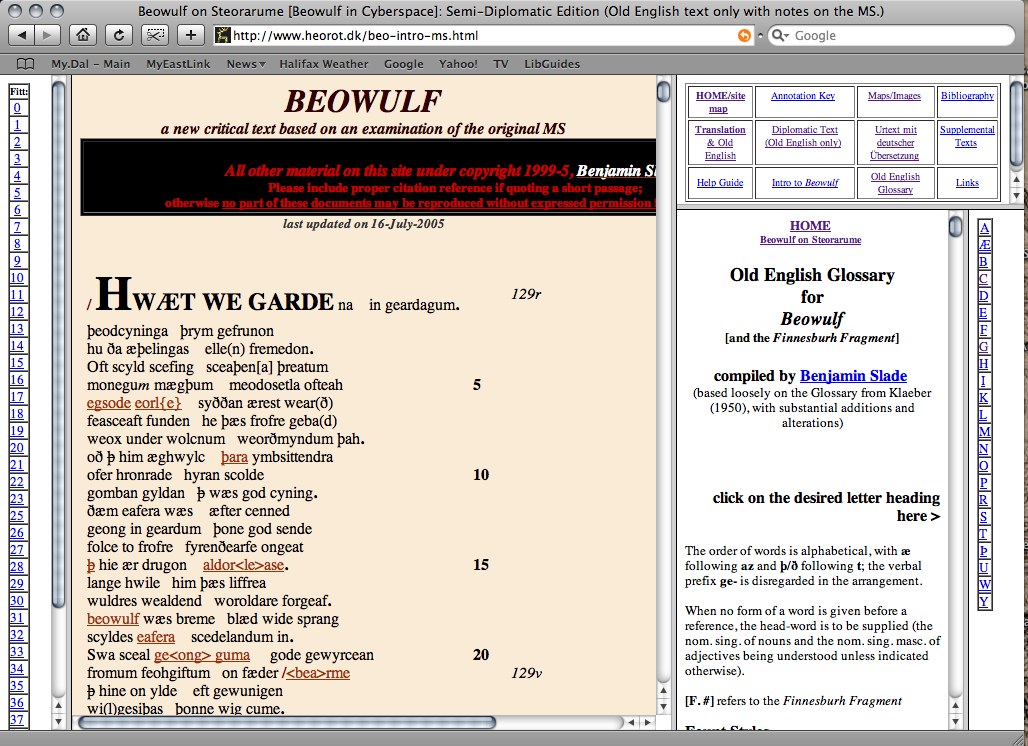E-text in the humanities: Top ten four contributions
Processing
Traditional printed text is very linear in nature. Text is read across a line from left to right, right to left or top to bottom, depending on your language. Books start at page one of the volume and continue in a steady stream to the end of the book more or less. Sometimes books will have scholarly apparatuses appended to the edition. A glossary, for example, may appear at the end of a book containing a text that needs translation. The human mind, however, does not always work in such a linear fashion.
E-text allows for hyperlinking, both internally and externally, which changes the way readers interact with text. A hyperlink in a document can quickly bring up new or explanatory text for the reader with ease. Hyperlinking in a difficult text like Beowulf provides many alternate ways of approaching and navigating the text. At the website Beowulf in Steorarume (Beowulf in Cyberspace)[!], the reader can read the text in Old English, OE with a parallel Modern English text, or OE with a parallel German text. Difficult parts of the original are linked to a section of notes that opens up in a pane beside the text. The same pane can also display an OE glossary (with its own hyperlinked index). No more flipping back and forth through various part of a book trying to piece together an understanding. Everything you need to make sense of the text can be brought before you with the original text still there for reference.

Electronic text can also allow for other forms of processing that have eluded traditional forms of text. Computer programs such at Kurweil 3000 can take printed text, turn it into e-text, and then have a computer read the text back to the user. Dragon's NaturallySpeaking, on the other hand, is speech recognition software that takes the spoken word and turns it into e-text for later manipulation. These types of programs have made a huge contribution to the access of text and education of people with reading difficulties or physical handicaps which might otherwise impede their ability to interact with text.
Analysing